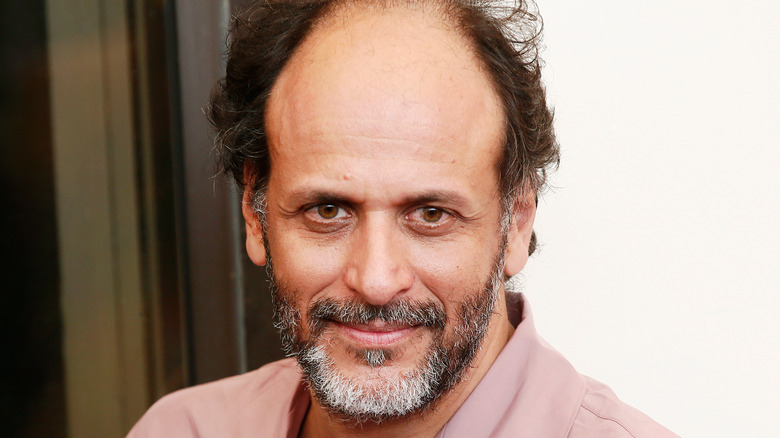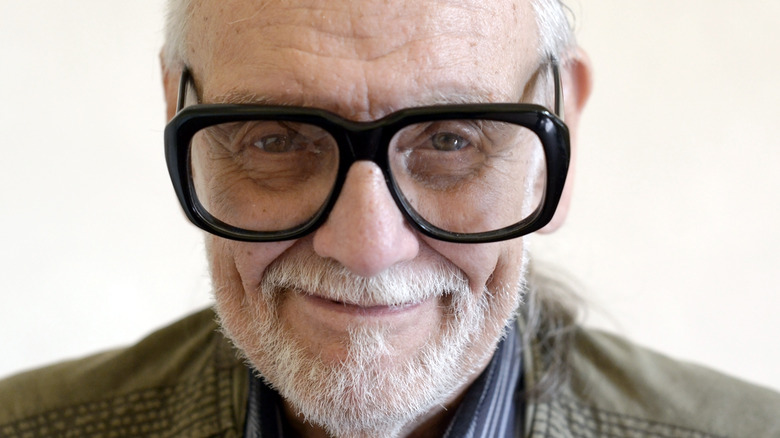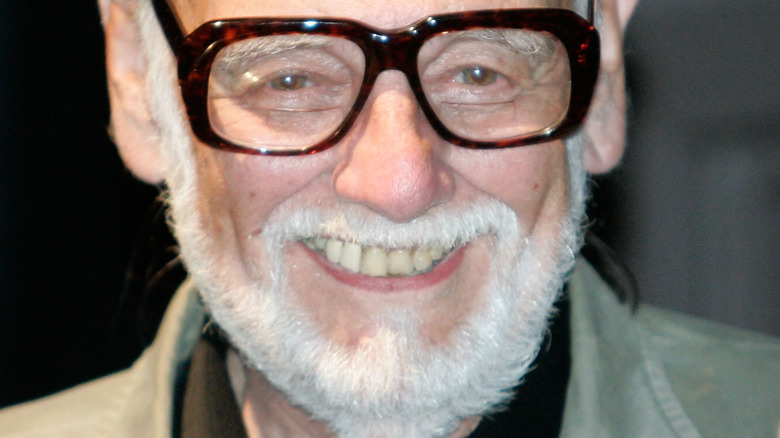Luca Guadagnino Is A Huge Fan Of George A. Romero
"Call Me By Your Name" director Luca Guadagnino may have an interest in telling romantic human stories, but he also has an eye for horror. He also directed the remake of "Suspiria" and the gory love story "Bones and All." He cited that he's a pretty big fan of one of the great masters of horror: George A. Romero.
Romero spent his career, up until his death in 2017, working in horror movies. Besides his epic contributions to the genre such as "Creepshow" and "The Crazies," Romero is definitely best known for his zombie film franchise. The original trilogy of those zombie films, "Night of the Living Dead," "Dawn of the Dead," and "Day of the Dead," are some of the most well-regarded horror films in history.
While "Night of the Living Dead" isn't the first zombie movie ever, Romero created the modern zombie as we know it today in things like "The Walking Dead." Before "Night of the Living Dead," a zombie wasn't a flesh-eating ghoul like we see today; it was typically a hypnotized person sent to do an evil mastermind's bidding, such as in films like 1932's "White Zombie." Romero reshaped horror tropes for zombies and cemented a legacy for one of cinema's most notorious modern monsters, even though he wasn't happy that zombies went Hollywood.
Luca Guadagnino loves how George Romero presents zombies in a matter-of-fact way
Count "Bones and All" director Luca Guadagnino as one of the legions of fans of "Night of the Living Dead" creator and all-around master of horror, George A. Romero. Luca Guadagnino spoke to Total Film about the thriller, which also happens to be about cannibals falling in love, "Bones and All," and how it relates to the work of Romero. Despite the flashy premise, Guadagnino doesn't see "Bones and All" as necessarily a cannibal story. He said, "A movie is great whenever you have the opportunity to tell an endearing story and to follow characters that you can fall in love with, no matter what they are, what they do, and who they want."
He compared the cannibal aspect of that film to how George Romero used zombies in his movies. For example, Romero used "Night of the Living Dead" to talk about the civil unrest in America due to racism and the Vietnam War in the 1960s. He also used the mall setting in 1979's "Dawn of the Dead" to talk about the alarming rise of consumerism in America. Guadagnino said, "Romero never brought the fantastic into his world. He has a very matter-of-fact, practical outlook, given the premise that the dead are coming back to life and they're seeking fresh human flesh." Likewise, by Guadagnino's comparison, the fact that the main characters are cannibals in "Bones and All" is just matter-of-fact instead of being presented as fantasy.
Luca Guadagnino calls George Romero one of the greatest film directors
Luca Guadagnino went on to give George A. Romero some very high praise. He said, continuing talking about how Romero brings the zombies in his films into real life, "He has not created rules other than dealing with how it would happen in reality, and that's why he's one of the greatest directors." He continued, "The political and cinematic qualities of the original [Romero zombie] movies stand the test of time." Guadagnino pointed out that the imitators of and the remakes of Romero's work will not have the same legacy because they don't carry the weight of the originals. He almost made the comparison that Romero's work has been cannibalized over the years.
Romero commented on the reality in his zombie movies that Guadagnino is referring to in a 2014 interview for NPR. Romero said of the zombie movie monsters that he created with "Night of the Living Dead," "I made them the neighbors ... I thought there's nothing scarier than the neighbors!" Romero always saw zombies as a metaphor to tell human stories. He said of the zombies in his films, "They are multi-purpose, you can't really get angry at them, they have no hidden agendas, they are what they are." He went on to say that it's the humans audiences should really fear in his movies.


